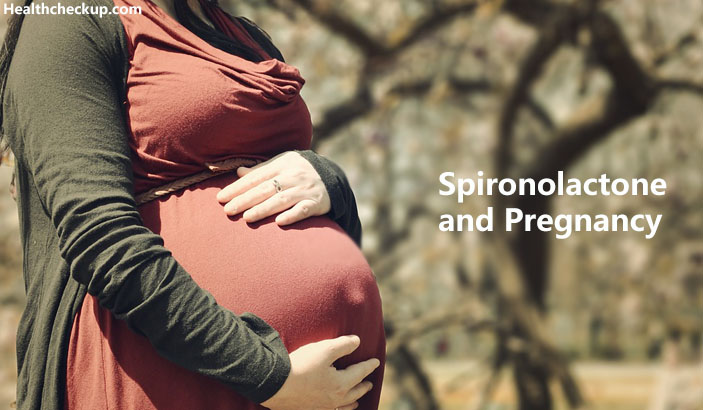What Is Spironolactone?
A drug that falls in the category of Potassium-sparing Diuretic used mainly in the treatment of Hypertension, because of its aldosterone antagonist property. In normal terms it blocks aldosterone and helps removes excess fluid via kidneys.
It is mainly used as an Anti-Hypertensive and in Congestive heart failure, but since it has an aldosterone antagonizing action it is also extensively used to diagnose and treat Primary Hyperaldosteronism (Conn’s Syndrome).
The FDA Categorizes Medications based on safety During Pregnancy.
| Category | Risk |
|---|---|
| Category A | The safest drugs to take during pregnancy. No known adverse reactions. |
| Category B | No risks have been found in humans. |
| Category C | Not enough research has been done to determine if these drugs are safe. |
| Category D | Adverse reactions have been found in humans. |
| Category X | Should never be used by a pregnant woman. |
Spironolactone falls under category C where there is no evidence or studies done enough on humans suggestive of any Teratogenic effects(negative effect on fetal growth) or feminization of male fetus during pregnancy. Therefore, the use of Spironolactone in pregnant women requires that the anticipated benefit be weighed against the possible hazards to the fetus.
Spironolactone And Pregnancy Tests?
There are two types of pregnancy tests;
Everyone will have a doubt of will spironolactone affect pregnancy test ? but no, Spironolactone won’t hamper blood pregnancy tests results. Medications that contain hCG, or the combination with hCG, may give false positive results if the pregnancy test is performed within 7-14 days of the last drug administration.
Instead in urine pregnancy tests, Spironolactone can cause a false positive result due to decrease in urine (fluid) and more dilution of urine.
Can You Take Spironolactone While Nursing?
Nursing mothers: Canrenone, a major (and active) metabolite of Spironolactone, appears in human breast milk. It is generally recommended not to take spironolactone during nursing. If the use of the drug is deemed essential, an alternative method of infant feeding should be instituted. However, only very small amounts of spironolactone and its metabolite Canrenone enter breast milk, and the amount received by an infant during breastfeeding (<0.5% of the mother’s dose) is considered to be insignificant.
Spironolactone is estimated to be 90% protein bound. The bio availability when taken by mouth of spironolactone is 60 to 90%.
Time to peak plasma concentration is approximately one hour. Distribution – Although the plasma half life of spironolactone itself is short (1.3 hours) the half lives of the active metabolites (Canrenone) are longer (ranging from 3 to 12 hours).
What Are The Side Effects Of Spironolactone?
Digestive: Gastric bleeding, ulceration, gastritis, diarrhea and cramping, nausea, vomiting.
Endocrine: Gynecomastia (see Precautions), inability to achieve or maintain erection, irregular menses or amenorrhea, postmenopausal bleeding. Carcinoma of the breast has been reported in patients taking Spironolactone but a cause and effect relationship has not been established.
Hematologic: Agranulocytosis.
Hypersensitivity: Fever, urticaria, maculopapular or erythematous cutaneous eruptions, anaphylactic reactions, vasculitis.
Metabolism: Hyperkalemia
Nervous System /Psychiatric: Mental confusion, ataxia, headache, drowsiness, lethargy.
Liver / Biliary: A very few cases of mixed cholestatic/hepatocellular toxicity, with one reported fatality, have been reported with Spironolactone administration.
Renal: Renal dysfunction (including renal failure). Contraindications of spironolactone include end-stage kidney disease and Hyperkalemia (high levels of potassium)
Medically Reviewed By








